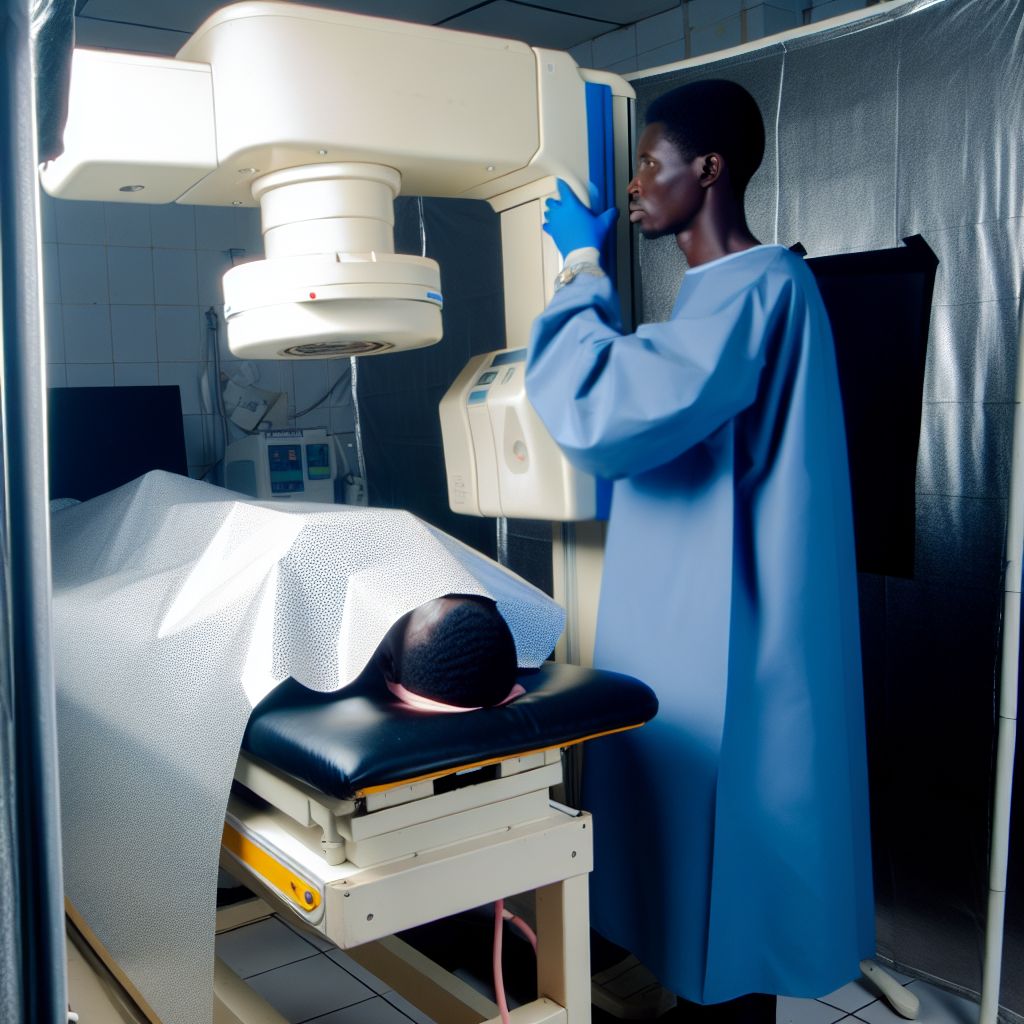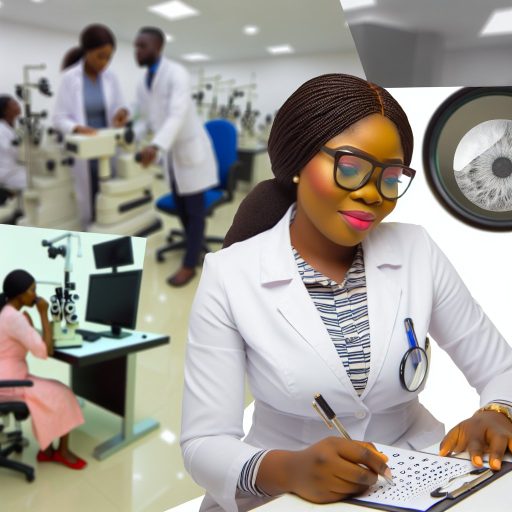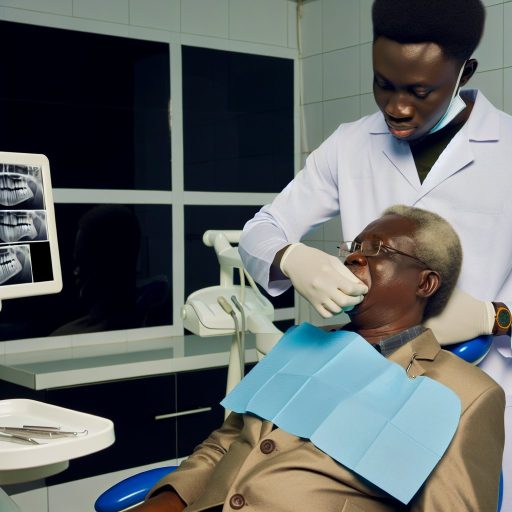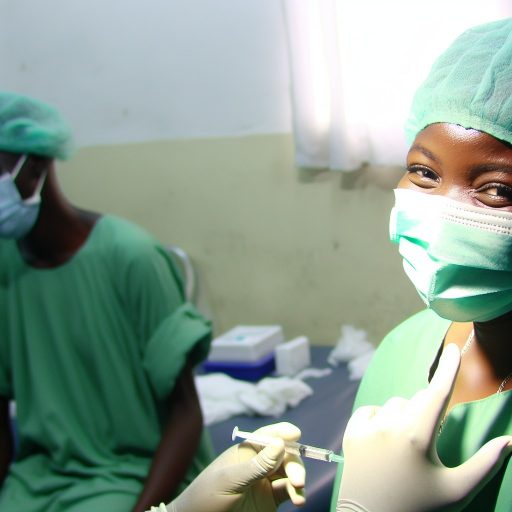Introduction:
Radiography is the use of X-rays or other imaging technologies to diagnose and treat diseases.
Radiology is the medical specialty that uses imaging to diagnose and treat diseases within the body.
These two fields play a crucial role in healthcare by allowing healthcare professionals to visualize internal structures.
In rural Nigeria, radiography and radiology are especially important due to limited access to specialized healthcare services.
The healthcare system in rural Nigeria faces several challenges, including a shortage of healthcare facilities and trained professionals.
Despite these challenges, radiography and radiology can help bridge the gap in healthcare services by providing accurate diagnoses.
Without these imaging technologies, many patients in rural Nigeria would have to travel long distances for proper diagnosis.
Overall, radiography and radiology are essential components of healthcare in rural Nigeria, improving access to quality healthcare services.
Radiography and Radiology Access Challenges in Rural Nigeria
Radiography and radiology play a crucial role in healthcare.
They provide valuable insights into a patient’s condition.
However, several challenges exist in rural Nigeria.
These challenges hinder access to these essential services.
Lack of Access to Radiography and Radiology Services
One of the primary challenges is the lack of access to radiography and radiology services.
Many remote areas do not have imaging facilities.
This forces residents to travel long distances to urban centers for diagnostic testing.
Limited Healthcare Infrastructure
Another major obstacle is the limited healthcare infrastructure in rural Nigeria.
Hospitals and clinics in remote areas often lack necessary equipment.
This further exacerbates the problem of providing radiography and radiology services.
Shortage of Trained Radiographers and Radiologists
There is a significant shortage of trained radiographers and radiologists in rural Nigeria.
This shortage makes it challenging to provide timely and accurate diagnostic services.
Healthcare professionals are in dire need in these areas.
Addressing these challenges is essential to improve access to services.
Investment in healthcare infrastructure is crucial.
Training programs for radiography professionals must be established.
Increased funding for imaging facilities is also necessary.
Bridging the gap in healthcare disparities between urban and rural areas is vital.
Improving Access to Radiography in Rural Nigeria
To improve access to radiography and radiology services in rural Nigeria, several initiatives have been implemented.
These initiatives aim to bridge the gap between urban and rural healthcare facilities.
They ensure that rural populations have access to quality diagnostic imaging services.
Mobile Radiography Units
Mobile radiography units have been deployed in rural areas to bring diagnostic imaging services directly to communities.
These units lack access to traditional healthcare facilities.
Equipped with the necessary imaging technology, they perform X-rays, ultrasounds, and other diagnostic procedures on-site.
This initiative has helped to reach remote populations, providing timely diagnoses and treatments.
Telemedicine for Remote Consultations
Telemedicine has been utilized to connect rural healthcare providers with radiologists and specialists in urban centers.
Through telemedicine platforms, healthcare workers in rural areas consult with experts.
They share imaging studies and receive guidance on patient care.
This initiative enhances the quality of care in rural communities and improves patient outcomes.
Training and Education Programs for Healthcare Workers in Rural Areas
Training programs have been developed to ensure the proficiency of healthcare workers in rural Nigeria.
These programs focus on improving diagnostic imaging skills and interpreting results accurately.
They also emphasize understanding the use of radiology equipment.
Transform Your Career with Expert Guidance
Get personalized mentorship consulting that’s tailored to your unique path. Our expert advice is actionable and exclusive.
Get StartedBy investing in training, rural communities can receive better healthcare services.
This leads to timely and accurate diagnoses.
Overall, these initiatives have expanded access to radiography and radiology services in rural Nigeria.
By leveraging mobile units, telemedicine platforms, and training programs, healthcare providers in remote areas deliver quality care.
Such efforts improve health outcomes across the country.
Delve into the Subject: Insurance for Oral and Maxillofacial Surgery in Nigeria
Success stories of radiography and radiology in rural Nigeria:
Impact of mobile units on diagnosing and treating patients
- Mobile units have brought imaging services directly to remote areas.
- Patient access to X-rays and ultrasounds has significantly increased.
- Early detection of conditions like fractures and tumors is now possible.
- Treatment plans can be promptly initiated based on on-site results.
- Mobile units have helped reduce the need for patients to travel long distances.
Improved healthcare outcomes in underserved communities
- Radiography has played a key role in improving diagnostic accuracy.
- Early detection has led to better management of chronic conditions.
- Surgical interventions have been expedited due to timely imaging.
- Patient outcomes have shown an overall improvement in rural areas.
- Mortality rates have decreased as a result of timely interventions.
Increased awareness and utilization of radiography services
- Community education programs have raised awareness about radiology.
- Patients are now more informed about the benefits of imaging tests.
- Referrals for radiography services have seen a significant increase.
- Healthcare providers are more likely to recommend imaging tests.
- Radiology centers have seen a rise in the number of patients seeking services.
The success stories of radiography and radiology in rural Nigeria are evident in the impact of mobile units, improved healthcare outcomes, and increased awareness and utilization of radiography services.
These advancements have transformed healthcare delivery in underserved communities.
Moreover, they have played a significant role in enhancing patient care and outcomes.
Learn More: Success Stories: Nigerian Prosthesis Experts
Barriers to implementation:
Implementing radiography and radiology services in rural Nigeria faces several challenges that hinder its effectiveness and accessibility.
Funding constraints:
- Lack of financial resources to purchase equipment and maintain facilities.
- Inadequate budget allocation for training radiography personnel.
- High cost of setting up and operating radiology centers in remote areas.
Technological limitations:
- Unavailability of advanced imaging equipment in rural healthcare facilities.
- Poor infrastructure such as unstable electricity supply affecting equipment functionality.
- Limited access to digital reporting systems for sharing and storing diagnostic images.
Cultural beliefs and stigmas surrounding radiography:
- Misconceptions about radiation exposure leading to reluctance in seeking diagnostic imaging.
- Preference for traditional healing methods over modern medical technology in some communities.
- Resistance to accepting radiographic findings due to distrust in Western medical practices.
Addressing these barriers requires a coordinated effort from government, healthcare providers, and community members to improve the implementation of radiography and radiology services in rural Nigeria.
By investing in infrastructure, training programs, and awareness campaigns, these challenges can be overcome, ultimately enhancing healthcare access and outcomes in underserved areas.
It is crucial to prioritize these efforts to ensure that all individuals have access to quality diagnostic imaging services for early detection and treatment of medical conditions.
Explore Further: Major Blood Donation Drives Across Nigeria

Future prospects and recommendations:
– Investment in healthcare infrastructure in rural areas
– Collaboration between government, NGOs, and private sector
– Continued education and training for healthcare professionals in radiography and radiology
Investment in healthcare infrastructure in rural areas:
One of the key areas that need improvement in rural Nigeria is the healthcare infrastructure.
Investing in building and maintaining hospitals, clinics, and diagnostic centers in rural areas will improve access to radiography and radiology services.
Collaboration between government, NGOs, and private sector:
To address the challenges faced in rural Nigeria, collaboration between the government, NGOs, and the private sector is crucial.
Government funding, along with support from NGOs and private companies, can help in setting up and running healthcare facilities equipped with radiography and radiology equipment.
Continued education and training for healthcare professionals in radiography and radiology:
Ongoing education and training programs are essential for healthcare professionals in radiography and radiology.
This will ensure that healthcare workers in rural areas are equipped with the latest knowledge and skills to provide accurate diagnostic services to the community.
By focusing on these recommendations, we can see a significant improvement in the availability and quality of radiography and radiology services in rural Nigeria.
Making these investments and fostering collaboration will contribute to better healthcare outcomes for the underserved populations in these areas.
Uncover the Details: Impact of Microbiology on Nigeria’s Economy
Importance of Radiography in Rural Healthcare
Considering the critical role that radiography and radiology play in rural Nigeria, it is evident that these imaging techniques are crucial for accurate diagnosis and treatment of various health conditions.
Without access to such essential medical services, the residents of rural areas would be at a significant disadvantage in terms of healthcare.
Therefore, it is imperative to continue investing in and supporting the development of radiography and radiology services in underserved communities.
As we strive for improved healthcare services in rural Nigeria, it is crucial to recognize the impact that radiography and radiology have on the overall well-being of the population.
By ensuring that these imaging services are readily available and of high quality, we can help save lives and improve health outcomes for countless individuals living in remote areas.
Therefore, it is essential for stakeholders, policymakers, and healthcare professionals to work together to ensure that radiography and radiology services are accessible and sustainable in rural Nigeria.
By advocating for continued support and investment in healthcare infrastructure, we can make a significant difference in the lives of those who need it most.




